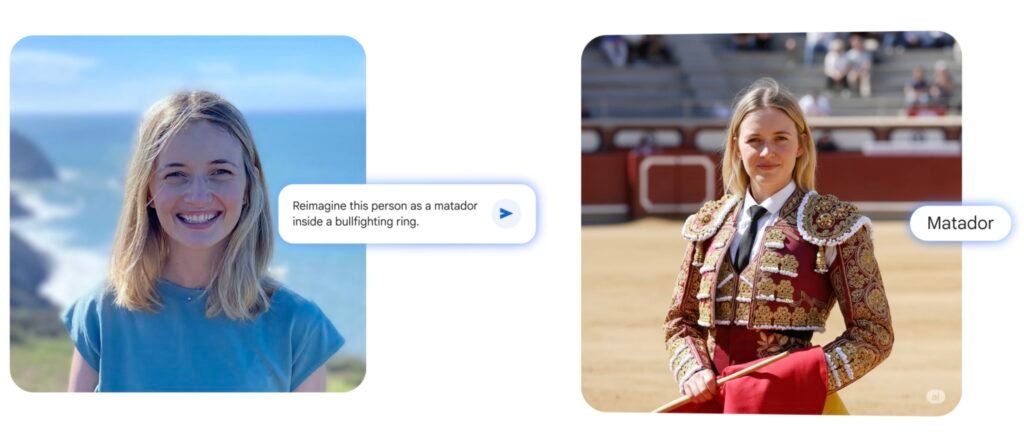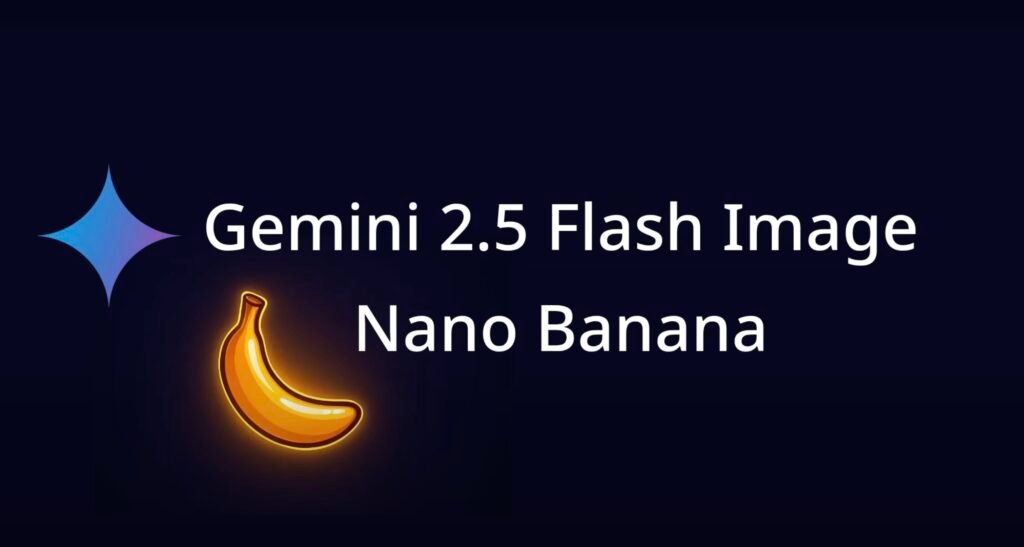Every once in a while, Google rolls out a feature with a name that makes you stop and do a double take. “Nano Banana” is one of those. At first, it sounds more like a smoothie flavor than cutting-edge AI. And behind the quirky name is a serious upgrade to Google’s Gemini image editing tools, Gemini 2.5 Flash Image.
The idea is simple: make AI-powered image editing faster, more accurate, and easier for everyday users. Whether you’re trying to clean up a vacation photo, remove a background, or create something new, it aims to streamline the process.
What’s interesting here isn’t just the playful branding, but the practicality of what it offers. For creators, designers, and even casual photo editors, Nano Banana could be the feature that makes advanced AI editing tools feel less intimidating.
What Is Nano Banana?
Nano Banana is Google’s latest upgrade inside its Gemini AI suite, designed specifically for smarter and faster image editing. While the name sounds playful, the feature itself is focused on precision.
Think of it as a fine-tuned layer of intelligence that lets Gemini handle image edits more naturally, whether that means removing small objects, enhancing photo quality, or generating new visual details.
The quirky name comes from Google’s tradition of using lighthearted codenames for internal projects. “Nano” reflects the tool’s ability to handle fine-grained edits, while “Banana” is simply Google having fun with branding.
But behind the humor, the capability is serious: Nano Banana represents a major step toward making AI image editing feel seamless and less like trial and error.

In practice, this means users can expect smoother object removal, more accurate background fills, and better handling of fine details — areas where older AI editors often stumbled.
By embedding Nano Banana into Gemini, Google has essentially turned a curious name into a practical power tool for anyone working with images.
Nano Banana in Gemini: How It Works
For most users, Nano Banana won’t feel like a separate app — it’s baked right into Google Gemini’s image editing tools. The upgrade is about giving you more control while making edits look natural and professional, even if you’re not a designer.
Prompt based image editing
Nano Banana or Gemini 2.5 Flash Image lets you perform precise local edits and targeted transformations using natural language. You can blur backgrounds, remove stains from clothing, erase entire people, adjust poses, or create virtually any modification with a simple text prompt.
All of these powerful edits can be executed directly through the Gemini prompt or via Google AI Studio, allowing users to achieve professional-level results quickly and effortlessly, without the need for complex photo-editing software.

Smarter Object Removal
One of the standout improvements is how easily Nano Banana handles removing objects. Instead of leaving behind awkward smudges or warped backgrounds, the AI now fills gaps more cleanly.
For example, taking a photobomber out of a vacation shot feels like magic, because the background rebuilds itself without obvious seams.
Faster Image Processing
Speed is another big advantage. Nano Banana reduces the time it takes to render edits, leveraging NVIDIA GPU acceleration for even faster performance, which is especially useful for high-resolution photos.
In earlier AI editors, complex edits could stall or lag, but with Nano Banana, results appear faster, making it practical for quick fixes on the go.
More Natural Detail Generation
Perhaps the most impressive part is how Nano Banana generates fine details. If you expand a cropped image or edit out a large section, the AI fills in textures, lighting, and edges in a way that feels natural.
It’s not perfect every time, but it’s noticeably more reliable than older tools that sometimes produced odd distortions.
Nano Banana for Image Editing
Where Nano Banana shines most is in everyday photo editing. Instead of juggling complicated software or learning steep editing skills, users can rely on Gemini’s AI to handle the heavy lifting. That makes it practical not only for professionals but also for casual users who just want their photos to look cleaner and sharper.
One popular use case is removing distractions from photos. Whether it’s an unwanted object in the background or a shadow that throws off the balance, Nano Banana can edit it out while keeping the image natural.
It also excels at enhancing photo quality — sharpening blurry shots or improving lighting in ways that traditional editing tools often require multiple steps to achieve.

The tool also has creative applications. Want to expand a cropped image so it looks like it was shot wider? Or generate new visual elements to complete a scene? Nano Banana makes these tasks more approachable.
It’s not flawless, but for most users, it delivers results that feel closer to professional editing without the learning curve.
Nano Banana vs Other AI Image Tools
When it comes to AI-powered editing, Nano Banana isn’t alone. Tools like Photoshop’s Generative Fill, Canva’s Magic Edit, and MidJourney’s creative outputs all offer ways to tweak or generate images.
What sets Nano Banana apart is its integration inside Google’s Gemini ecosystem — it’s built for speed, simplicity, and everyday usability.
To give a clearer picture, here’s how Nano Banana stacks up against some popular AI editing tools:
AI Image Editing Comparison
| Tool | Strengths | Weaknesses | Best For |
|---|---|---|---|
| Nano Banana (Gemini 2.5 Flash Image) | Fast, simple, natural detail generation | U.S. rollout limited, still evolving | Quick, everyday edits |
| Photoshop AI | Professional-grade, precise control | Expensive, steeper learning curve | Designers, professionals |
| Canva Magic Edit | Easy drag-and-drop edits, accessible | Limited detail accuracy, simple outputs | Small business owners, marketers |
| MidJourney | Stunning generative creativity | Not focused on edits, prompt-heavy | Artists, concept creators |
The takeaway is simple: Nano Banana isn’t about replacing Photoshop or competing with MidJourney on pure creativity. Instead, it’s about bringing advanced editing power into a tool you can use quickly without fuss. That practicality makes it appealing for people who want polished results without having to master complex software.
Where This Tech Is Heading
Nano Banana may sound playful, but its role in Google’s AI roadmap is anything but. By embedding smarter image editing directly into Gemini, Google is signaling that it wants to make AI tools part of everyday life — not just something for professionals.
The easier and faster these features become, the more likely they are to replace traditional editing workflows altogether.
Looking ahead, we can expect Nano Banana to evolve alongside Gemini. Google has already hinted at more advanced generative capabilities, which could mean creating entire photo-realistic scenes from simple text prompts or editing videos with the same ease as images.
If Nano Banana is the first step, the next phase could be making professional-level creativity available to anyone with a smartphone.
For users, the trend is clear: AI editing tools are no longer niche. They’re becoming standard features across platforms, shaping how we think about design, creativity, and even truth in digital media.
Nano Banana shows that the future of image editing isn’t about learning complicated software — it’s about having the power of AI quietly working in the background, so your photos look better with less effort.



